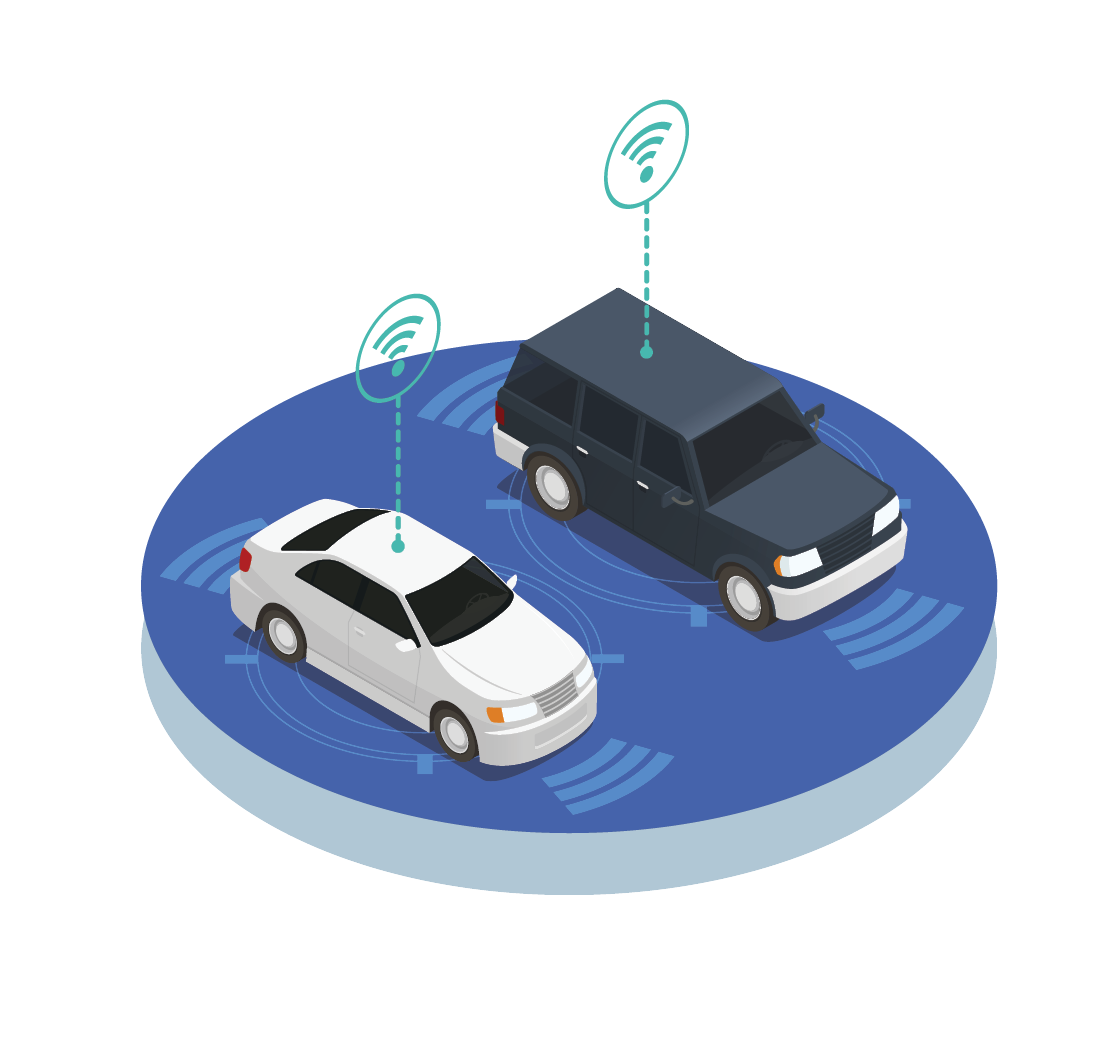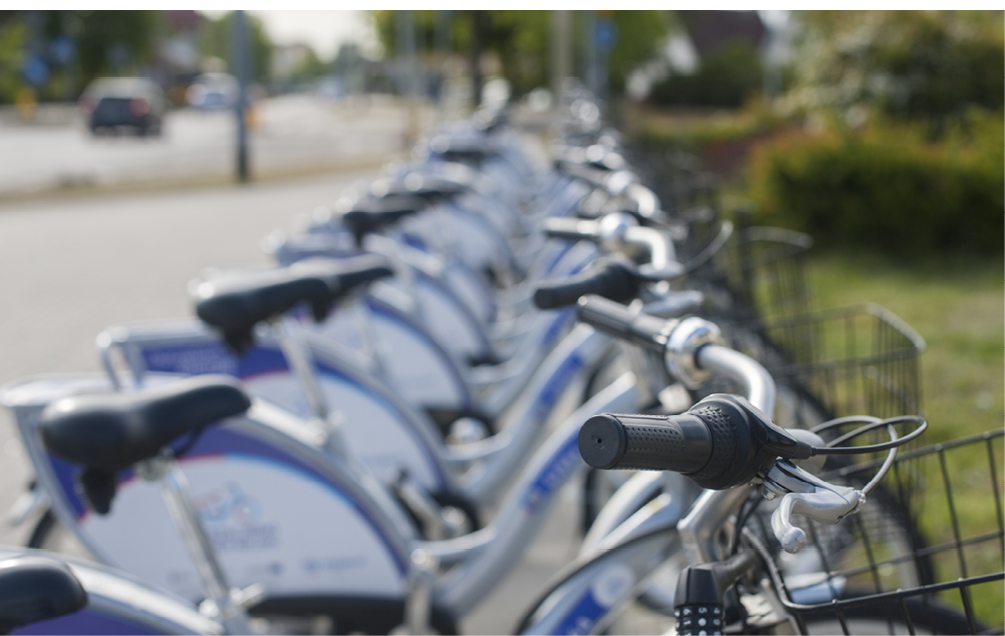8. The Future of Traffic Safety
1.INTELLIGENT TRANSPORTATION SYSTEMS, HUMAN-MACHINE INTERACTION AND AUTONOMOUS VEHICLES
Intelligent transportation systems have the potential to give new opportunities in terms of traffic safety.
Technologies ensuring necessary communication between the passenger, road, and vehicle are generally used in Intelligent Transportation Systems (ITS) advanced as a result of the adaptation of information and communication technologies to the transportation sector. Within the frame of the developments in engine and safety technologies in recent years, the “Connected Car” technology and “Cooperative Intelligent Transport Systems C-ITS” came into view as a result of the transportation systems with mechanical and technical automotive substructure feeding on the information systems.263Amongst several direct and indirect benefits expected from intelligent transportation systems are:
- Decreasing traffic accidents and increasing the safety and security of roads, drivers, and pedestrians,
- Enhancing the performance of the transportation system and decreasing traffic jams,
- Monitoring, directing, and ensuring the real-time management of traffic,
- Optimization of transportation time and contributing to the economy by reducing transportation costs,
- Enhancing service quality and productivity,
- Increasing personal mobility and comfort,
- Minimizing the damage brought on the environment and ensuring energy conversation.264
The satellite positioning systems (global navigation satellite systems-GNSS), wireless networks, mobile communication tools, infrared communication, CCTV closed-circuit television, close-range communication technologies, detection technologies, etc. technological advancements under the intelligent transportation systems are adapted to the transportation field as part of these developments and the emergence of developments other than ordinary transportation systems are expected in the ongoing process.265
Progress will be made in the fields of the in-vehicle speed limit, control, and monitoring systems, emergency brake lighting systems, roadwork warning system, weather conditions information system, intersection safety, and the protection of vulnerable road users along with the adaptation of these technologies to vehicle safety. Due to these reasons, it will be necessary to make legal and administrative regulations by following the developments such as the vehicle to vehicle (V2V) knowledge transfer and technologies prescribing interaction and facilitate the use of technologies evaluated to contribute to traffic safety in available vehicles and the vehicles to be produced.
The interaction between humans and machine will be one of the fields to speculate due to the increasing use of technology
The developments starting along with the introduction of smartphones and even smart household appliances into the market show themselves in the transportation and automotive sector for certain. Applications easy-to-use and ones protecting the physical integrity of humans will attain their place in the market along with the adaptation of human-friendly technological applications into smart vehicles and smart roads to move traffic safety to the next level.
When considered from this point of view, it is necessary to make efforts that put humans forward by improving international common ethical values and establish the driver assistance systems, intelligent transportation systems, automatic and autonomous driving systems in a way to protect humans. The evaluation of all these developments in terms of ethical values and human psychology as well as their presentation with a balance to disable technological dependence is of great importance.
The autonomous vehicle technology should be followed up vigilantly and evaluated in terms of traffic safety
Safety is one of the significant criteria in autonomous vehicle technologies and is the primary matter for the relevant institutions and organizations to pay attention in receiving the type approval. The preparation of an action plan in this regard continues across the European Union.266
Interaction with other road users on the same road, artificial intelligence solutions, and the use of autonomous vehicles as a fleet are the main fields observed to be problematic on autonomous vehicles. The common use of autonomous vehicles will require the making of amendments in the legal legislation, changing in the certification of driver’s license and the driver training, establishment of infrastructure pertinent to the use of vehicles, and the review of the regulations on the working hours of the drivers using these vehicles commercially. In this context, the redetermination of traffic rules will be necessary along with the reconditioning in the United Nations Geneva and Vienna Conventions.
According to the European Transportation Safety Council (ETSC) reports, some countries are expected267 to put into practice the legislative regulations on autonomous vehicles in 2022 and within this framework, the EU directive No. 2006/126 on Driver’s License will be required to be extended in a way to ensure that the student drivers can drive all newly-produced semi- and full-autonomous vehicles.

2.CHANGE IN TRAVEL MODES MORE PEDESTRIAN MOVEMENTS AND USE OF BICYCLES
Recently, mobility as pedestrians and bicycle use has been more demandable due to reasons such as health, protection of the environment, and not being affected by traffic jams. Therefore, it will be appropriate to combine this change of demands with a more habitable environment by taking this change in people in intracity traffic into account.
One of the biggest barriers in meeting the demand on travelling as a pedestrian or by bicycle is infrastructure deficiencies and the potential of the category forming the vulnerable road users group to get harmed in traffic.
Therefore, policies should be adopted to ensure that vulnerable road users get less harmed in the coming years. These developments should be ensured in infrastructure, vehicle technology, and road user behaviours topics. The European Union Infrastructure Safety Directive No. 2008/96 approaches the safety of vulnerable road users in intracity and upstate main roads.
Speed controls are the most important topics in terms of preventing the road user behaviours from bringing damage to vulnerable segments. Additionally, the controls need to be supported by training and campaigns. Amongst the measures to take to protect the vulnerable road users are:
- Determining numerical objectives to prevent the loss of lives of vulnerable road users,
- Performing speed controls co-ordinately in areas with high numbers of vulnerable road users, especially the intracity roads,
- Developing the road parameter which the European Union Infrastructure Safety Directive No. 2008/96 covers,
- Building separate roads for pedestrians, bicycles, and two-wheeler motor vehicles,
- Setting minimum safety standards to protect vulnerable road users and presenting these standards in Intracity Transportation Plans,
- Adopting the Safe Traffic City practice,
- Adapting the EuroVelo bicycle network as part of the TEN-T network,
- Determining the maximum speed limit as 30 km/hrs in intracity roads and areas with a high number of pedestrians and bicyclists, Determining the volume of traffic accidents, in which vulnerable road users get involved, isn’t entirely possible, for they don’t apply health care organizations in some cases. The whole picture of the scene of the accident should be observed to perform accident analyses precisely and develop preventive strategies.
- Besides, identifying the types of motor bicycles in accident reports,
- Continuing the definition of two-wheeler vehicles which don’t go over 25 km/hrs and which have a continuous output of 250 W when used pedal supported, and whose power generation automatically ceases when at maximum speed, as electric bicycles,
- Considering the provision of special training and examination for motor bicycles that can reach 45 km/hrs,
- Raising the standard of helmets used in bicycles and incentivizing the use of helmets in a way not to be perceived as reducing the usage of bicycles

3.INDIVIDUAL TRANSPORTATION OPTIONS (SHARING PRIVATE VEHICLES)
The common use of a private vehicle (such as the persons working at the same workplace going to the office in a single-vehicle) being a new type of transportation in many European cities has been observed frequently in the recent years. In some cases, it is observed that motorcycles, motor bicycles, and scooter-type vehicles and well as automobiles are commonly used by two persons. It is even considered that these methods have been started to be increasingly used in the courier, cargo, and distribution sector.
It is considered that the walking trails and bicycle lanes built to do exercise and employ leisure time will have difficulty in meeting the newly emerging need due to the difficulty in reaching all parts of the city in the use of these modes especially in commercial cargo and courier transportation and that the aforesaid transportation modes getting over to the road section used by vehicle traffic will bring along other safety risks. Within this context, it is recommended to:270
- Ensure unity of practice according to best practice examples for the safe use of motor and classic bicycles,
- Identifying safe infrastructure requirements pertinent to these transportation modes and using them in infrastructure regulations,
- and improving the CARE database to include the accidents happening in these transportation modes.
4.DEMOGRAPHIC CHANGE AND HUMANS WITH LIMITED MOBILITY
Based on the fact that the average age of the population in the world gradually increases, ensuring the safety of persons with disabilities with limited mobility and the elderly in traffic has become an important topic. With this object in mind it is necessary to;
- Making the design of public transport vehicles in a way to facilitate the use of persons with disabilities with limited mobility and the elderly,
- Producing new vehicles in a way to facilitate the use of elderly people,
- And providing training for the engineers and road inspectors assigned in road infrastructure on the needs of persons with disabilities and the elderly.
5.TRAFFIC SAFETY ON COMMERCIAL ACTIVITIES
Ensuring traffic safety while performing the modification, repair, and construction in road infrastructure is also an important topic within commercial freight and passenger transportation.
- The tender contractors and transportation companies are recommended to take necessary measures by considering that it is an occupational health and safety issue to ensure the safety of life of persons assigned working at the transportation sector and the ones assigned in a road infrastructure project,
- The measures to be taken to protect the staff including the tender contractors assigned in the transportation sector and infrastructure works are recommended to be applied as part of the Council Directive dated 12 June 1989 and No. 89/391/ EEC on Taking Measures to Enhance the Health and Safety of Workers.

6.TWO-WHEELER MOTOR VEHICLES
The two-wheeler motor vehicles play a serious part in loss of lives related to the traffic accidents although they are few in numbers when compared to the total number of vehicles. However, it is also seen that these rates change in some countries.
The consideration of the safety of the two-wheeler motor vehicles and the preparation of a guidebook on the protective systems and strengthened infrastructure options and its distribution to relevant institutions and organizations is necessary within the directive No. 2008/96 on Infrastructure Safety. The following matters become crucial within this scope:272
- Determining compulsory standards to inform the consumers on helmet and personal protective equipment and including the topic of the lifetime and the care/cleaning of the protective equipment in these standards
- Looking for ways to increase the visibility of two-wheeled motor vehicles, using the vertical lights automatically switched on regardless of the time of the day,
- Applying the Cancellable Intelligent Speed Assistance System on motorcycles and adapting the Anti-lock Braking System to all motorcycle categories,
- Measuring the distracting feature of new technology products, especially cell phones and developing measures in return,
- Informing the other road users on the risks of two-wheeled motor vehicles and conducting campaigns,
- Frequently controlling the suitability of motorcycles on roads,
- Including the danger perception training in driver’s license trainings, gaining the driving technique and style in driving course, and developing the driving skill in the course,
- Determining the standard of training of trainer for trainers assigned in driving courses and subjecting them to the general improvement and updating training periodically, subjecting the driver trainers to risk perception trainings,
- Necessitating the theoretical and practical training, and practical examination in motorcycle rider courses,
- And Conducting scientific research on the safety of two-wheeled motor vehicles.
7.SAFE TRAFFIC CITY AWARD
Amongst our cities, it is recommended;
- to grant the “Safe Traffic City Award” to the city or the ones ranking within the traffic week activities under the auspices of the office, by evaluating the one-year activities of the cities with successful efforts on increasing the comfort of roads through projects developed in terms of traffic safety, infrastructure and environment regulations, road structure improvement, and alternative transportation modes, making great success in the context of 2030 and 2050 objective in accidents involving death and serious injuries as a result of the coordinated efforts of all stakeholders and bringing forward a proposal to other cities by developing good practice examples, by an independent jury,
- for the cities to prepare their strategy and action plans in line with the Traffic Safety Strategy Paper and accordance with the 2030 and 2050 objectives, determine the local traffic safety objectives with these plans, improve the intracity traffic, take infrastructure measures, protect the vulnerable road users, allocate necessary budget and create the monitoring mechanisms, and the successful city to be entitled to use the symbol representing the “Safe Traffic City Award”,
- to allocate enough resources for the projects to be conducted in the cities and prioritize the efforts on pedestrianization and decreasing the maximum speed limit to 30 km/hrs,
- to prepare the “Sustainable City Transportation Plan Guideline” in line with the traffic safety objectives274,
- to consider traffic safety in city and logistics planning,
- to apply the measures co-ordinately along with separating the traffic calming measures, physical measures, and roads from one another in City Transportation Action plans, developing Connected Intelligent Transportation Systems, and determining the areas with 30 km/hrs speed limits.
